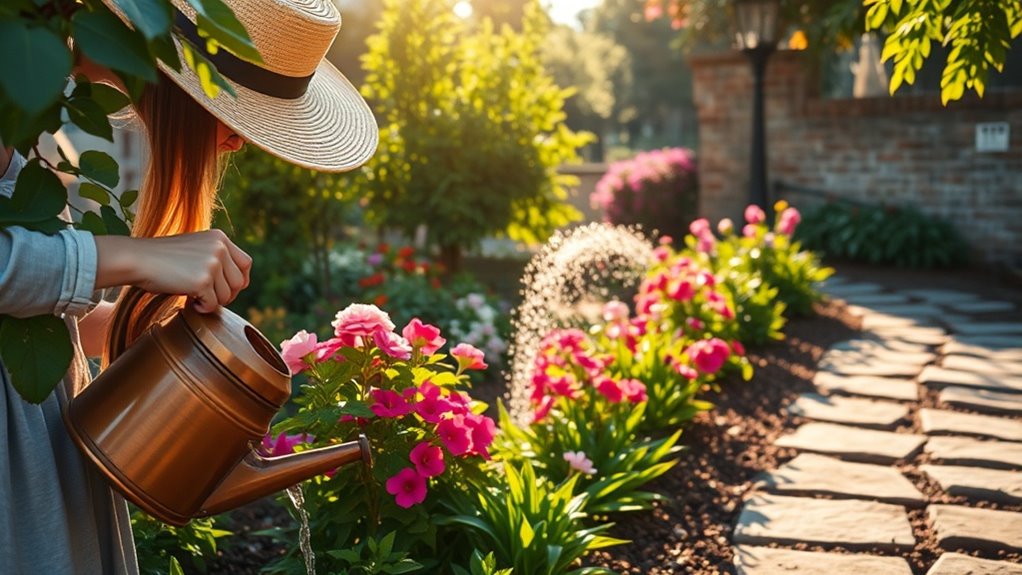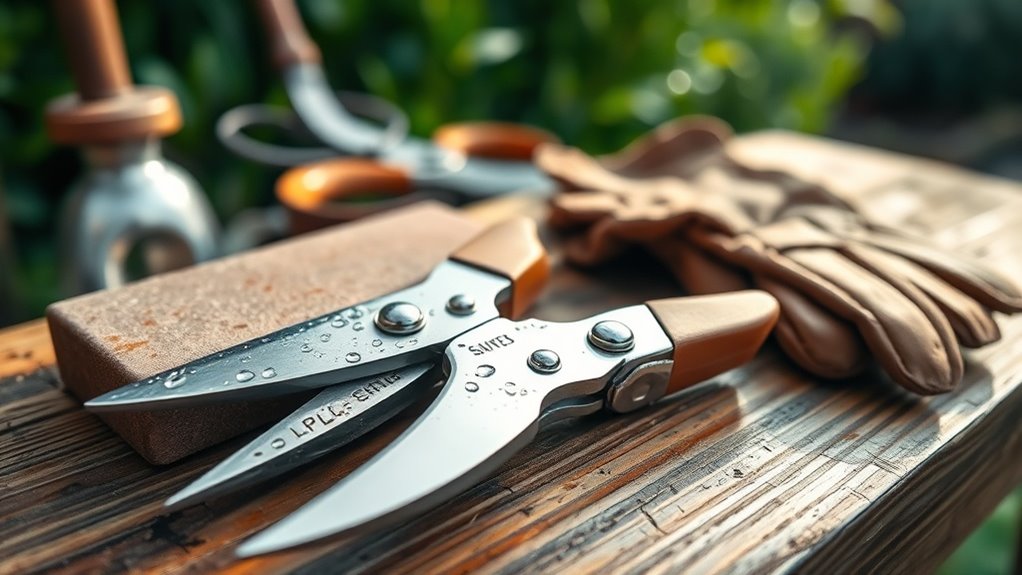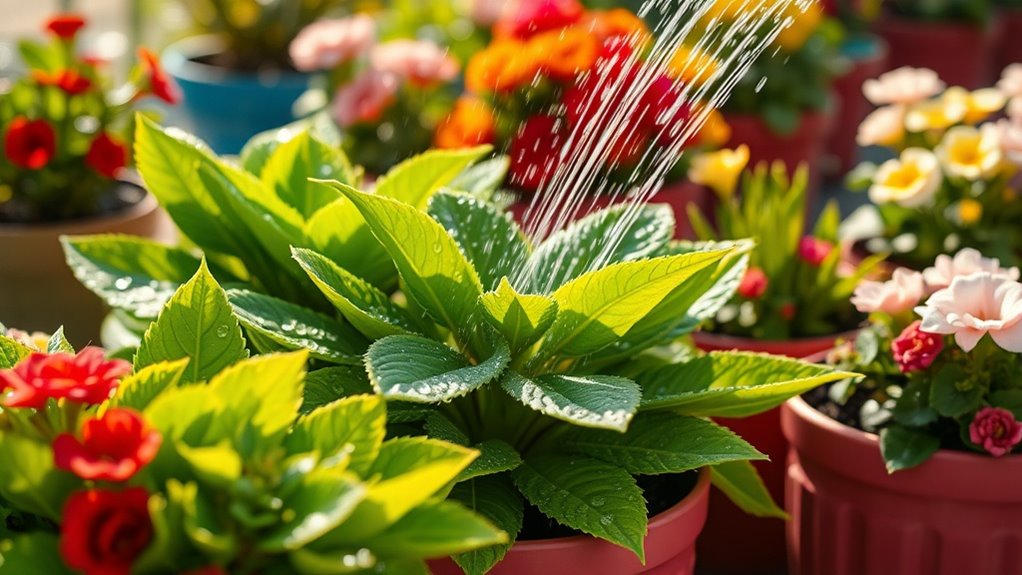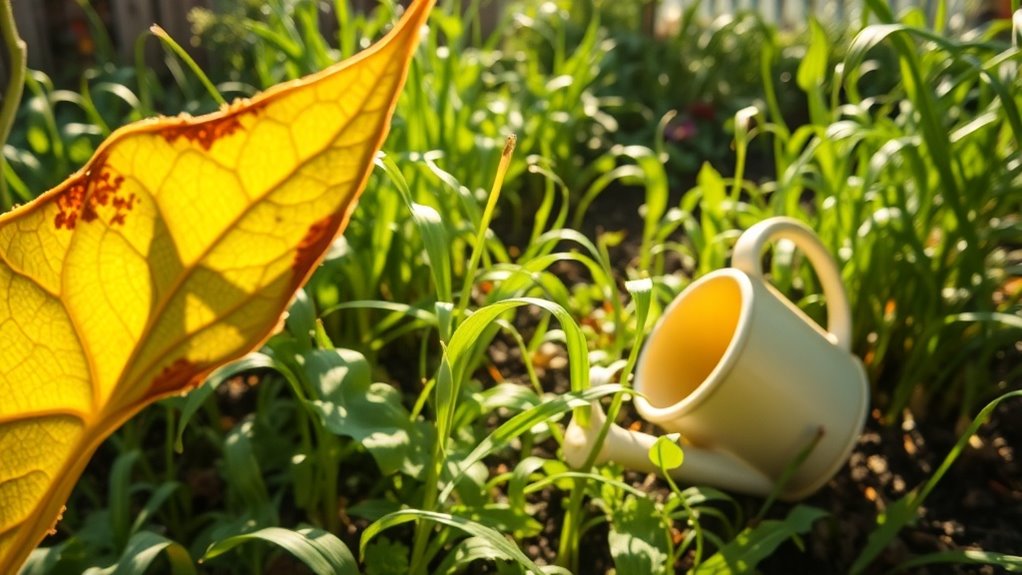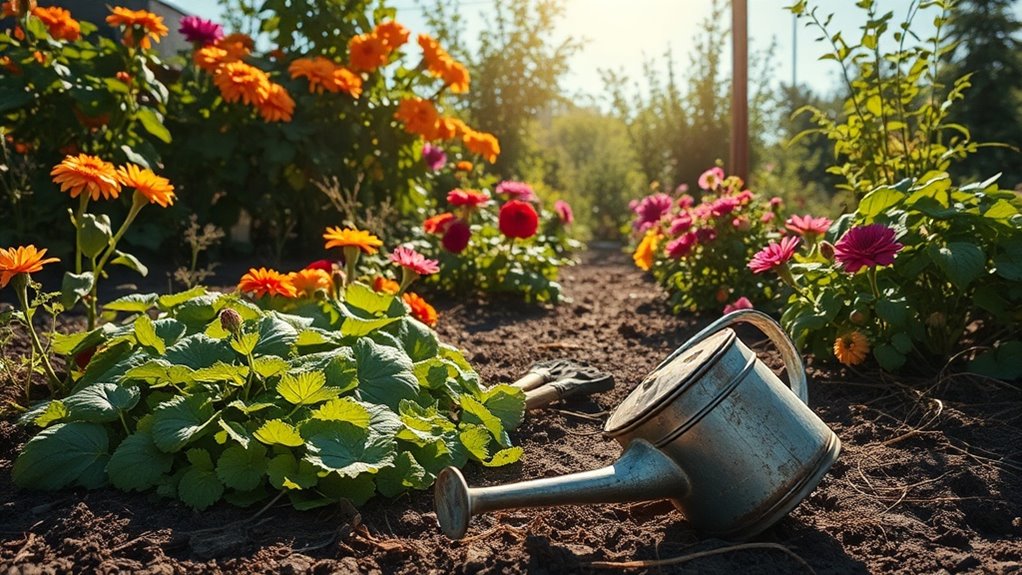10-Minute Daily Garden Routine for a Healthy Yard
A daily 10-minute garden routine can transform your outdoor space into a thriving paradise. By simply walking through your garden each morning, you can spot potential issues like pests or wilting plants before they escalate. Checking soil moisture, weeding, and deadheading flowers are just a few essential tasks that boost your plants’ health. Curious about how a brief feeding and precise watering can make a difference? Let’s uncover the specifics that will breathe new life into your yard.
Morning Walk Around the Garden
As you step into the garden each morning, you’re greeted by the soft, dew-kissed leaves that shimmer in the early sunlight.
This morning walk is essential to your daily gardening routine. You observe plant health, check for pests, and admire new blooms.
Each detail matters, keeping your garden vibrant and thriving. In this tranquil moment, you connect deeply with your flourishing sanctuary. Additionally, spending just minutes can significantly streamline your garden maintenance, allowing you to enjoy more time nurturing your plants instead of managing tasks.
Check Soil Moisture
How often do you pause to consider the moisture content of your soil?
Checking your soil moisture daily ensures your plants receive the right hydration.
Stick your finger about an inch deep—if it’s dry, it’s time to water.
Healthy soil moisture promotes root development and nutrient absorption, ultimately leading to a vibrant garden.
Overwatering can lead to detrimental effects on plant health, so it’s important to find that sweet spot!
Don’t underestimate the impact of proper watering!
Deadheading Flowers
Deadheading flowers is an essential task in maintaining a vibrant garden. By removing spent blooms, you encourage your plants to produce new flowers, extending their blooming season.
Look for wilting or faded petals and snip them off just above the first set of healthy leaves. This simple act not only enhances your garden’s appearance but also boosts overall plant health and vigor. Additionally, regular maintenance practices like deadheading can prevent common gardening mistakes that hinder your plants’ growth.
Weeding the Garden Beds
Keeping your garden beds free of weeds is vital for maintaining healthy plants.
Take a few minutes daily to tackle any unwanted intruders. Consider these key practices:
- Hand-pulling before seeds develop
- Mulching to suppress growth
- Using a hoe for tougher weeds
- Regularly checking after rain
- Staying consistent to prevent large infestations
Additionally, be mindful that some habits that harm soil can exacerbate weed growth, so adopting soil-friendly practices is beneficial. Your diligence will ensure vibrant, thriving garden beds!
Inspecting Plants for Pests
Effective pest management is crucial for a thriving garden, and dedicating just a few moments each day to inspect your plants can make a significant difference.
Look closely at leaves, stems, and soil for any signs of infestation—small holes, discoloration, or crawling pests.
Catching issues early helps you protect your plants, ensuring they grow healthy and strong throughout the season. Don’t skip this vital step! Additionally, using a DIY bug spray can provide an extra layer of protection against pests, helping you maintain a safe and chemical-free garden environment.
Pruning Dying Leaves or Stems
A vibrant garden thrives on regular care, and pruning dying leaves or stems is a key aspect of this routine.
By removing unhealthy parts, you boost your plant’s overall health and encourage new growth. Regular pruning helps prevent common gardening mistakes that could hinder your plants’ vitality.
- Use clean, sharp scissors
- Identify and remove affected areas
- Don’t prune too much at once
- Aim for a clean cut
- Dispose of waste properly
Feeding the Plants
Feeding the Plants
Nourishing your garden with the right food is essential for flourishing plants.
Choose a balanced fertilizer with necessary nutrients tailored to your plants’ needs. Apply it during their growing season for maximum benefit.
Don’t forget to feed your soil with organic compost; it enriches the earth and promotes healthy growth. Additionally, consider creating effective homemade fertilizer from kitchen scraps to enhance nutrient availability.
A well-fed garden will reward you with vibrant blooms and bountiful harvests.
Watering Essential Areas
While you may have the perfect fertilizer mix, proper watering is equally vital for your plants’ health.
Target specific areas to ensure moisture reaches their roots effectively. Focus on these essential zones:
- Base of each plant
- Newly planted seeds
- Flower beds
- Vegetables in raised beds
- Areas with poor drainage
Consistent watering promotes growth and resilience, ensuring your garden thrives.
Harvesting Ripe Vegetables or Fruits
Knowing when to harvest your vegetables or fruits can make all the difference in achieving peak flavor and nutrition.
Look for vibrant colors, firmness, and a slight giving when you squeeze them. Don’t wait too long; overripe produce loses taste and nutrients.
Carefully pick each item to prevent damage, and enjoy the satisfaction of relishing your labor’s fruits—literally!
Happy harvesting!
Planning for Tomorrow’s Tasks
To ensure your garden thrives, it’s essential to outline tomorrow’s tasks today. A little planning makes a big difference in your daily routine and keeps your garden flourishing.
Consider the following:
- Check soil moisture levels
- Prune any overgrown plants
- Inspect for pests or diseases
- Prepare compost for new beds
- Schedule time for planting new seeds
Keep your garden on track for success!

